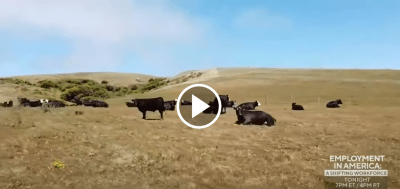Drought in Western US
Severe Droughts in Western U.S. Force Farmers to Forgo Or Swap Crops
June 19, 2021
The historic drought across the Western U.S. is forcing farmers and ranchers to downsize. Growers are being asked not to water their crops, or to plant crops that use less water. Meanwhile, ranchers are selling off herds because they can't afford to feed them. The vice president of PRICE Futures Group, Jack Scoville, spoke with CBSN's Lana Zak about what this means for our nation's food supply chain.
A Severe Drought is Gripping the Western U S As Wildfire Season Begins
June 19, 2021
Nearly three-fourths of the U. S. West is grappling with the most severe drought in the recorded history of the U. S. Drought Monitor, as hot and arid conditions are set to exacerbate the threat of wildfires and water supply shortages this summer. Parts of California, Nevada and Washington experienced sweltering triple-digit temperatures over the past week amid the drought, according to the National Weather Service, with states releasing excessive-heat warnings and heat advisories in some areas. Conditions this spring are much worse than a year ago. In fact, nearly half of the continental U. S. is in a moderate to exceptional drought, marking the most significant spring drought in the country since 2013, according to scientists with the National Oceanic and Atmospheric Administration. The U. S. Drought Monitor, a map produced by a team of academic and government scientists, started roughly two decades ago. It is updated every Thursday to display the location and intensity of drought across the country. In California, which frequently experiences drought conditions and massive wildfires, state reservoirs are 50% lower than they should be at this time of year, an Associated Press report says, which could trigger hydroelectric power plants to shut down during the worst part of wildfire season. The state had its worst wildfire season on record last year in terms of total acres burned, fueled in part by prolonged heat waves, drought and lightening strikes made worse by climate change. During a meeting with the head of the California Department of Forestry and Fire Protection last week in Sacramento, Gov. Gavin Newsom called for a record $2 billion wildfire preparedness budget and an expansion of its fleet of aircraft to combat the fires. California will also have its largest firefighting force in history working on the ground during peak fire season. Alisha Herring, a communications representative for Cal Fire, told CNBC the department has completed dozens of fuel reduction projects, including controlled burns, to reduce the threat of fires this season."As we move deeper into the summer months, conditions will only dry out further, increasing the fire danger," she said. "These dry conditions make it much easier for a wildfire to ignite and to burn hotter and faster than we would normally see this time of year."Read more of CNBC's politics coverage:Farmers in the Northwest are also dealing with growing drought damages to crops and struggling to irrigate fields as water levels go down."72% of the western US is currently in 'severe' drought or worse. This is now the most extensive severe drought in recorded history," climate scientist and activist Eric Holthaus wrote in a tweet. "We are in a climate emergency."Climate change is making drought and other extreme weather such as hurricanes and wildfires more frequent and intense.


